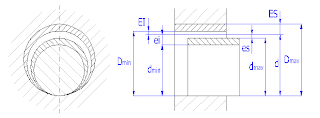cutting tool technology - tool geometry
Every machinists use cutting tools to make up a desired shape in a desired dimension, most of us are limited only on using it, but a little study will help to find the best method and tool to work on certain workpiece.
Most of these considerations involve cutting tool geometry :
Read more
Most of these considerations involve cutting tool geometry :
- Lead angle is the approach angle of the cutting edge as it enters the workpiece. The lead angle controls the direction of the radial cutting force and axial cutting force.
- Rake angle is the incline of the top surface of the cutting edge that makes contact with the chip. The rake controls the degree of cutting forces and cutting edge strength.
- Clearance angle is the angled relief behind the cutting edge that eliminates interference between the cutting tool and the workpiece.
- Cutter diameter is the maximum flat surface a cutter will machine.
- Insert pitch is the distance between corresponding positions on one insert to the same position on the subsequent insert.
- Insert density is the number of inserts, or cutting edges, per inch of diameter.
- Hand of cut determines the cutter rotation direction. Milling cutters are designed to cut clockwise or counterclockwise.
- Mounting adaptation is determine by the type of machine spindle on which the rotating cutter is mounted. The method of mounting is a major factor in determining the rigidity and performance capability of the cutter.
Read more





0 comments: